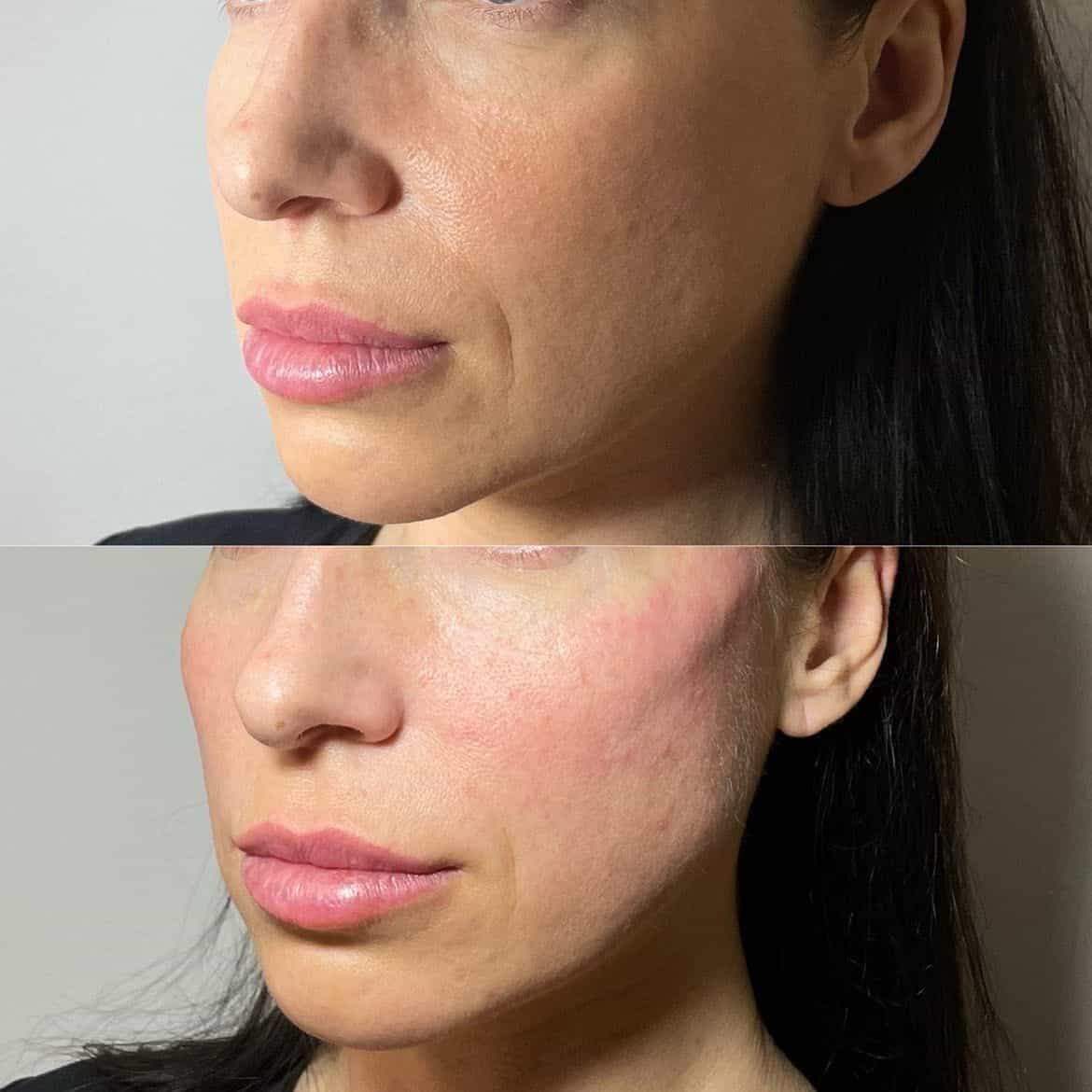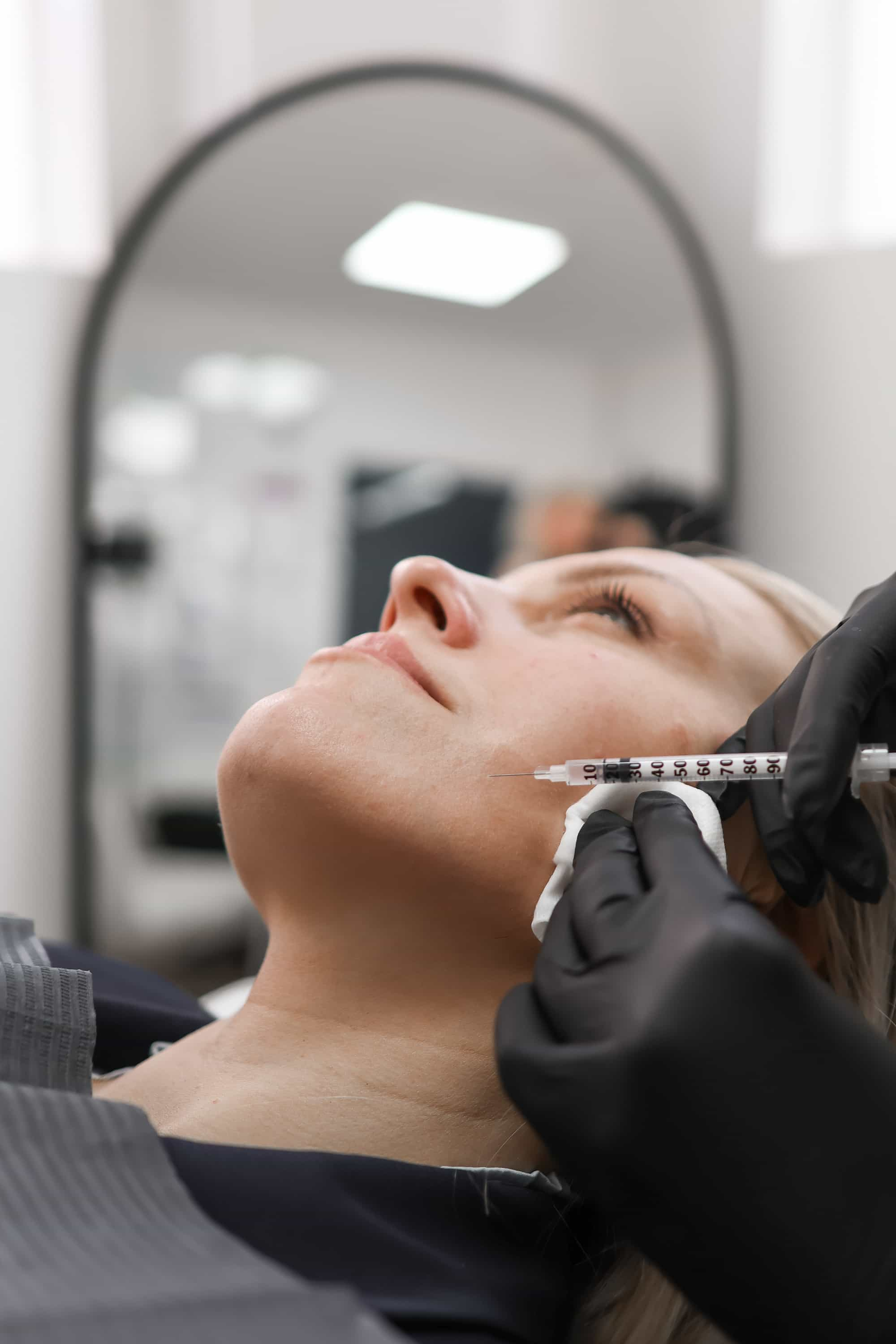Biological Factors
While social and environmental factors play a role in shaping our expressions, there are also biological underpinnings influencing how we smile. The structure of our facial muscles, particularly those controlling the corners of the mouth, can contribute to variations in how a smile appears.

Genetics
While social and environmental factors play a role in shaping our expressions, there are also biological underpinnings influencing how we smile. The structure of our facial muscles, particularly those controlling the corners of the mouth, can contribute to variations in how a smile appears.
Genetics plays a significant role in determining these muscle structures.
- Inherited Traits: Facial features, including the shape and positioning of the mouth, are largely determined by our genes. These genetic blueprints influence the development of facial muscles, which directly affect how a smile is formed.
- Muscle Fiber Type: Different muscle fiber types can impact the way muscles contract and relax. Variations in these fiber types, influenced by genetics, can lead to differences in the strength and shape of a smile.
Facial Structure
Anatomical variations in facial structure contribute to the diverse ways people smile. The zygomatic major muscle, responsible for lifting the corners of the mouth upwards during a smile, can differ in size and insertion points from person to person.

Additionally, the depressor anguli oris muscles, which pull the corners of the mouth downwards, may have varying strengths or lengths, influencing the overall curvature of a smile.
Muscle Development
Genetics plays a significant role in determining these muscle structures.
- Inherited Traits: Facial features, including the shape and positioning of the mouth, are largely determined by our genes. These genetic blueprints influence the development of facial muscles, which directly affect how a smile is formed.
- Muscle Fiber Type: Different muscle fiber types can impact the way muscles contract and relax. Variations in these fiber types, influenced by genetics, can lead to differences in the strength and shape of a smile.
Anatomical variations in facial structure contribute to the diverse ways people smile. The zygomatic major muscle, responsible for lifting the corners of the mouth upwards during a smile, can differ in size and insertion points from person to person.
Additionally, the depressor anguli oris muscles, which pull the corners of the mouth downwards, may have varying strengths or lengths, influencing the overall curvature of a smile.
Psychological Factors
While social and environmental factors shape our expressions, biological influences also play a role in how we smile. The structure of facial muscles, particularly those controlling the corners of the mouth, can lead to variations in how a smile appears.
Depression and Anxiety
Psychological factors, such as depression and anxiety, can significantly impact facial expressions, including smiling.
Individuals experiencing these conditions may find it difficult to generate genuine smiles due to changes in their mood, emotional state, and muscle control.
Depression often manifests as a lack of interest or pleasure, which can translate into a subdued or absent smile. The persistent feelings of sadness and hopelessness associated with depression can make smiling feel unnatural or even impossible.
Anxiety, on the other hand, can lead to muscle tension and facial expressions that reflect worry or apprehension. Smiling may appear forced or hesitant as individuals struggle with underlying anxieties.
It’s important to note that while these psychological factors can influence smiling patterns, they don’t definitively determine how someone smiles. Individual experiences, coping mechanisms, and social contexts also play a role.
Habitual Expression
While social and environmental factors shape our expressions, biological influences also play a role in how we smile. The structure of facial muscles, particularly those controlling the corners of the mouth, can lead to variations in how a smile appears.
Psychological factors, such as depression and anxiety, can significantly impact facial expressions, including smiling.
Individuals experiencing these conditions may find it difficult to generate genuine smiles due to changes in their mood, emotional state, and muscle control.
Depression often manifests as a lack of interest or pleasure, which can translate into a subdued or absent smile. The persistent feelings of sadness and hopelessness associated with depression can make smiling feel unnatural or even impossible.
Anxiety, on the other hand, can lead to muscle tension and facial expressions that reflect worry or apprehension. Smiling may appear forced or hesitant as individuals struggle with underlying anxieties.
It’s important to note that while these psychological factors can influence smiling patterns, they don’t definitively determine how someone smiles. Individual experiences, coping mechanisms, and social contexts also play a role.
Social Influences
Social and environmental factors undoubtedly shape our expressions, but the way we smile is also influenced by underlying biological structures. The arrangement of our facial muscles, particularly those controlling the corners of our mouths, contributes to the unique appearance of each smile.
Cultural Norms
Social and environmental factors undoubtedly shape our expressions, but the way we smile is also influenced by underlying biological structures. The arrangement of our facial muscles, particularly those controlling the corners of our mouths, contributes to the unique appearance of each smile.
- Genetics:
- Muscle Fiber Type
It’s important to note that while these psychological factors can influence smiling patterns, they don’t definitively determine how someone smiles. Individual experiences, coping mechanisms, and social contexts also play a role.
Environmental Factors
Social and environmental factors undoubtedly shape our expressions, but the way we smile is also influenced by underlying biological structures. The arrangement of our facial muscles, particularly those controlling the corners of our mouths, contributes to the unique appearance of each smile.
Genetic predispositions influence these muscle structures. Muscle fiber types, which impact how muscles contract and relax, can vary due to genetic influences, leading to differences in smile strength and shape. Anatomical variations also play a role. The zygomatic major muscle, responsible for lifting the corners of the mouth, and the depressor anguli oris muscles, which pull the corners downwards, can differ in size and insertion points, affecting the overall curvature of a smile.
Psychological factors, such as depression and anxiety, can significantly impact facial expressions, including smiling. Individuals experiencing these conditions may find it difficult to generate genuine smiles due to changes in their mood, emotional state, and muscle control. Depression often manifests as a lack of interest or pleasure, leading to a subdued or absent smile. Anxiety can cause muscle tension and worry-filled expressions, making smiles appear forced or hesitant.
It’s important to note that while these psychological factors can influence smiling patterns, they don’t definitively determine how someone smiles. Individual experiences, coping mechanisms, and social contexts also play a role.
Medical Conditions**
While social and environmental factors shape our expressions, biological influences also play a role in how we smile. The structure of facial muscles, particularly those controlling the corners of the mouth, can lead to variations in how a smile appears.
Neurological Disorders
While social and environmental factors shape our expressions, biological influences also play a role in how we smile. The structure of facial muscles, particularly those controlling the corners of the mouth, can lead to variations in how a smile appears.
Genetics plays a significant role in determining these muscle structures.
- Inherited Traits: Facial features, including the shape and positioning of the mouth, are largely determined by our genes. These genetic blueprints influence the development of facial muscles, which directly affect how a smile is formed.
- Muscle Fiber Type: Different muscle fiber types can impact the way muscles contract and relax. Variations in these fiber types, influenced by genetics, can lead to differences in the strength and shape of a smile.
Anatomical variations in facial structure contribute to the diverse ways people smile. The zygomatic major muscle, responsible for lifting the corners of the mouth upwards during a smile, can differ in size and insertion points from person to person.
Additionally, the depressor anguli oris muscles, which pull the corners of the mouth downwards, may have varying strengths or lengths, influencing the overall curvature of a smile.

Psychological factors, such as depression and anxiety, can significantly impact facial expressions, including smiling.
Individuals experiencing these conditions may find it difficult to generate genuine smiles due to changes in their mood, emotional state, and muscle control.
Depression often manifests as a lack of interest or pleasure, which can translate into a subdued or absent smile. The persistent feelings of sadness and hopelessness associated with depression can make smiling feel unnatural or even impossible.
Anxiety, on the other hand, can lead to muscle tension and facial expressions that reflect worry or apprehension. Smiling may appear forced or hesitant as individuals struggle with underlying anxieties.
It’s important to note that while these psychological factors can influence smiling patterns, they don’t definitively determine how someone smiles. Individual experiences, coping mechanisms, and social contexts also play a role.
Treatment Options
Understanding why some people have a permanently downturned smile requires exploring both biological and psychological influences.
Therapy
Treatment options for a perpetually downturned smile depend largely on the underlying cause.
If the downturn is attributed to muscle weakness or an imbalance, therapies like Botox injections or facial exercises might be considered.
Botox can temporarily paralyze specific muscles, helping to create a more symmetrical and lifted appearance.
Facial exercises aim to strengthen weakened muscles over time.
For individuals experiencing depression or anxiety contributing to a downturned smile, therapy plays a crucial role.
Cognitive-behavioral therapy (CBT) can help identify negative thought patterns and develop coping mechanisms for managing anxiety and depression.
In some cases, medication might be recommended in conjunction with therapy to alleviate symptoms of depression or anxiety.
Botox Injections
Understanding why some people have a permanently downturned smile requires exploring both biological and psychological influences.
Treatment options for a perpetually downturned smile depend largely on the underlying cause. If the downturn is attributed to muscle weakness or an imbalance, therapies like Botox injections or facial exercises might be considered.
- Botox Injections: Botox can temporarily paralyze specific muscles, helping to create a more symmetrical and lifted appearance.
- Facial Exercises: Facial exercises aim to strengthen weakened muscles over time.
For individuals experiencing depression or anxiety contributing to a downturned smile, therapy plays a crucial role.
- Cognitive-behavioral therapy (CBT) can help identify negative thought patterns and develop coping mechanisms for managing anxiety and depression.
- Medication: In some cases, medication might be recommended in conjunction with therapy to alleviate symptoms of depression or anxiety.
Book your personalized downturned smile treatment with Dr. Laura Geige.
- Cosmelan Depigmentation Peel Near Pyrford, Surrey - June 27, 2025
- The Speed Bump – Best Sex Positions For G-Spot Orgasms - June 26, 2025
- Cosmelan Depigmentation Peel Near Byfleet, Surrey - June 24, 2025
